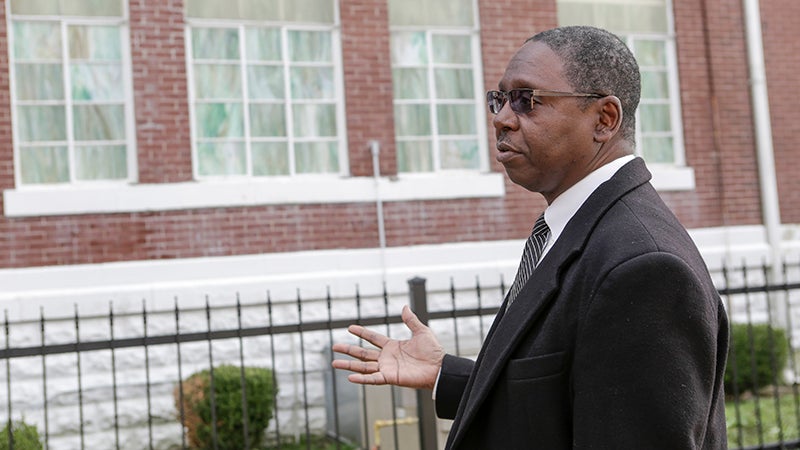Grant will help with Brown Chapel repairs
Published 10:00 pm Friday, January 20, 2017

- Dr. Leroy Maxwell surveys Brown Chapel AME Church and talks about renovations that will be done after the church’s preservation society was awarded a $500,000 grant.
Dr. Leroy Maxwell, a member of historic Brown Chapel AME Church, knows what it’s like to sit and worship in a church that played such a historic role in the Voting Rights Movement.
But he also knows that if the iconic building isn’t restored, it won’t be around for future generations to enjoy.
“We can tell the story,” he said, “but we want it to be here for our kids, grandkids and those way down the line.”
That’s why he is the chairman of Historic Brown Chapel AME Preservation Society Inc., which was just awarded a grant for $500,000 from the National Park Service.
“What we’re here for is to preserve,” he said. “We want to preserve the legacy of Brown Chapel for the future. If we do nothing now, it won’t be here.”
The grant is part of the NPS’s African American civil Rights Grant Program, which awarded over $7.5 million to 39 projects in 20 different states.
“It’s important that we do this because right now we’re in a situation where it won’t be here in 50 to 100 years,” Maxwell said. “We can push this off and leave it to future generations, but the cost will just double or triple.”
The church was built in 1908, making the building nearly 110 years old. In that time, Maxwell said some work has been done to preserve the building but nothing major.
“Over the years we’ve had some renovation done to it, but over the course of 100 years there has never been any serious renovation. The structure is very sturdy and strong, but yet the foundations are starting to crumble a little bit under there.”
During the grant application process, the preservation society had the building examined, and an engineer pointed out several key areas that need major work.
Maxwell said one of the main priorities is the foundation of the building.
“During that application process there were photographs taken underneath the church that shows some of that structural damage that makes it where it could be a danger in the future if we don’t do anything about it,” Maxwell said. “Right now, the structure is fine. There is no danger; however, we can see that it’s coming.”
There are also several other priorities on the list that could cause major issues in the future, such as the electrical wiring throughout the building and a spot where water is leaking into the structure.
“It is a major tourism spot for individuals coming to Selma, and we want to continue that,” Maxwell said. “We want it to always be a place where people can come in and relive and stand where Martin Luther King Jr. stood and come down the steps, walk out and head toward the bridge.”
His dream is to also redo the outside of the church where some of the paint is peeling off and the covers over the stained-glass windows are milky.
“We don’t know if we have enough funding to do everything, but we’re going to seek additional funding and see if we can come up with the means to take care of it, so when [people] see it, it should look like a brand-new structure,” he said.
“We don’t know what’s going to happen in the next seven, eight, nine years, but we do know this will help. I feel that it will go a long way.”
Other members of the preservation society for Brown Chapel are his wife, Juanda Maxwell, who is the grant chair, Al Perry, treasurer, Nancy Sewell, secretary, Aubrey Larkin, James Dawson and Johnny Moss Jr.





